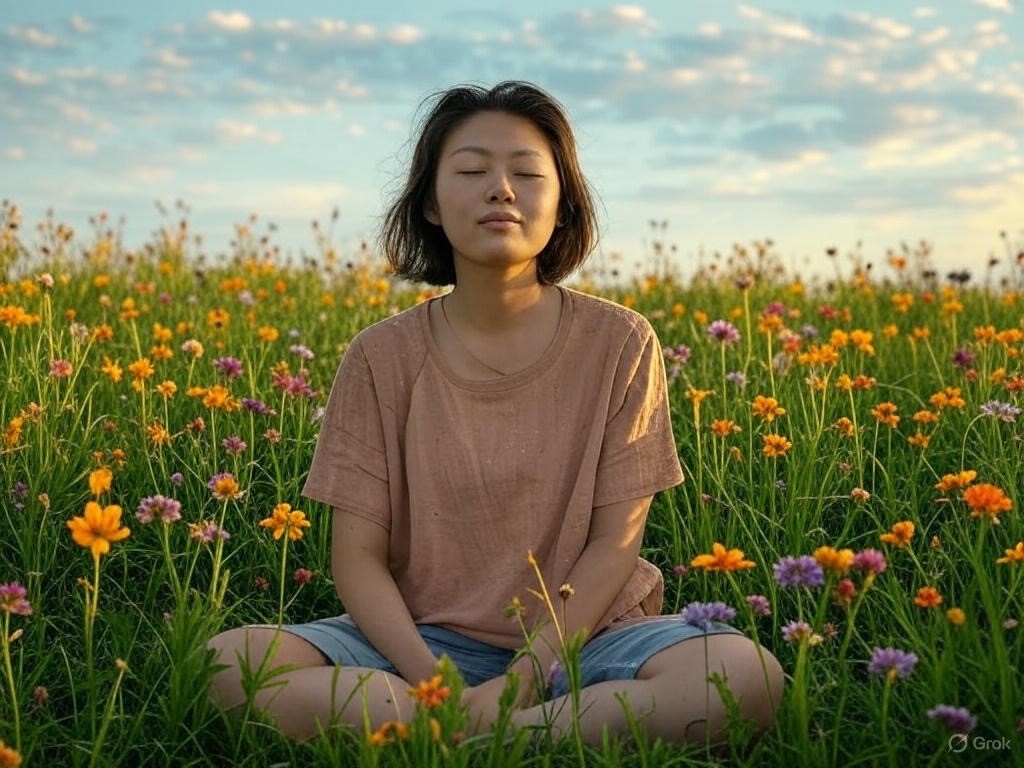Mindfulness 101: A Beginner’s Guide to Cultivating Presence and Peace
Introduction to Mindfulness
In a world of distractions, mindfulness offers a refuge—a way to anchor yourself in the present moment. But what exactly is mindfulness? At its core, mindfulness is paying attention to the here and now without judgment. It’s about observing your thoughts, emotions, and surroundings with curiosity rather than criticism. Research shows that regular mindfulness practice can:
- Reduce stress by calming the nervous system.
- Improve focus by training the brain to stay engaged.
- Enhance emotional balance by fostering self-awareness.
Whether you’re new to mindfulness or looking to deepen your practice, this guide will teach you essential concepts, provide practical exercises, and offer tips on integrating mindfulness into daily life.
Core Concepts of Mindfulness
To build a strong foundation, let’s explore three key principles:
1. Awareness: Tuning Into the Present
Awareness is the cornerstone of mindfulness. It involves noticing:
- Thoughts: Observe mental chatter without getting swept away (e.g., “I’m noticing worry about tomorrow’s meeting”).
- Feelings: Label emotions as they arise (e.g., “This is frustration”).
- Bodily sensations: Scan for tension, warmth, or relaxation.
Try this now: Pause for 30 seconds. Notice the feeling of your feet on the floor, the rhythm of your breath, and the sounds around you. There is no need to change anything—observe.
2. Non-Judgment: Embracing Curiosity
We often label experiences as “good” or “bad.” Mindfulness invites you to replace judgment with curiosity. For example:
- Instead of “I shouldn’t feel angry,” try “I notice anger is here.”
- Practice self-compassion: Treat yourself as you would a close friend.
3. Breath: Your Anchor to the Present
Your breath is a portable tool for grounding. When overwhelmed, focus on:
- The cool air entering your nostrils.
- The rise and fall of your chest.
- Counting breaths (e.g., inhale for four counts, exhale for 6).
Mindfulness Practices to Try Today

1. Mindful Breathing (10 Minutes)
Step-by-Step Guide:
- Sit comfortably, close your eyes, and relax your shoulders.
- Take a deep inhale through your nose, feeling your belly expand.
- Exhale slowly through your mouth. Repeat 3 times.
- Let your breath return to its natural rhythm. Focus on the sensation of each inhale and exhale.
- When your mind wanders, gently return to your breath.
Tip: Start with 5 minutes daily and gradually increase.
2. Body Scan Meditation (10 Minutes)
How to Practice:
- Lie down or sit comfortably. Close your eyes.
- Starting at your toes, mentally scan upward. Notice tension, warmth, or tingling.
- Breathe into areas of tightness. Imagine exhaling stress out.
- End by wiggling your fingers and toes and slowly opening your eyes.
Example: If you notice stiff shoulders, think, “I feel tension here,” and visualize it melting away.

3. Mindful Observation (10 Minutes)
Exercise:
- Choose an object (a plant, a cup, your hands).
- Study it for 2–3 minutes. Note its color, texture, and shape.
- If your mind drifts, return to observing the object.
Deepen the practice: Ask, “What does this object teach me about being present?”

Reflection: Journal Prompts
After practicing, reflect on these questions:
- How did focusing on your breath affect your mood?
- What sensations stood out during the body scan?
- Did mindful observation reveal anything new about everyday objects?
Tip: Keep a mindfulness journal to track progress and insights.
Integrating Mindfulness Into Daily Life
- Mindful Eating: Savor each bite. Notice flavors, textures, and how your body feels.
- Walking Meditation: Walk slowly, feeling your feet connect with the ground.
- Micro-Pauses: Take three deep breaths before answering emails or during chores.
Resources to Deepen Your Practice
- Apps: Headspace (guided sessions), Insight Timer (free meditations).
- Books: “The Miracle of Mindfulness” by Thich Nhat Hanh, “Wherever You Go, There You Are” by Jon Kabat-Zinn.
- Websites: Mindful.org (articles and courses).
Final Thoughts
Mindfulness isn’t about perfection—it’s about showing up, moment by moment, with kindness and curiosity. By practicing awareness, nonjudgment, and breathwork, you’ll cultivate resilience and joy in everyday life. Start small, be patient, and remember: Life happens in The present moment.
“The best way to capture moments is to pay attention. This is how we cultivate mindfulness.” — Jon Kabat-Zinn.
Ready to begin? Share your favorite mindfulness tip in the comments below, or bookmark this guide for daily inspiration! 🌿✨